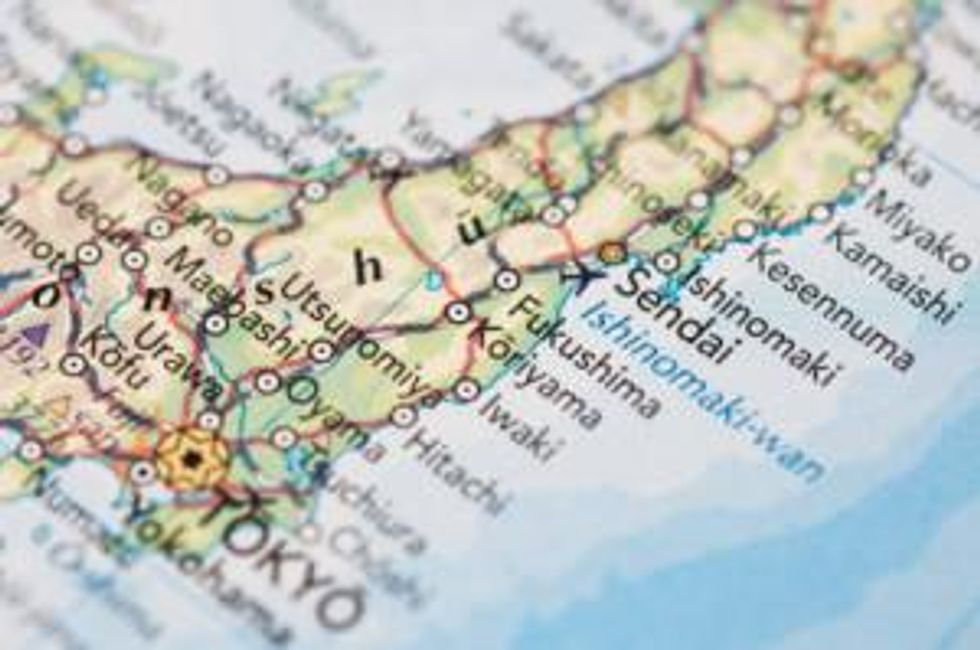Grafoid, Mitsui to Seek MesoGraf™ Market Opportunities in Japan
Graphite Investing News spoke with Dr. Gordon Chiu, president and co-founder of Grafoid, to find out why the company’s new memorandum of understanding with Japan’s Mitsui & Co. is important.
As March 25 drew to a close, privately held graphene research, development and investment company Grafoid announced that it has signed a memorandum of understanding (MOU) with Mitsui & Co. (TSE:8031) under which the companies will complete a one-year market feasibility study to “identify and develop market opportunities in Japan for Grafoid’s MesoGraf™.”
The agreement “recognizes both companies’ willingness to pursue business opportunities that focus on and lead to the commercialization of MesoGraf™ in the Japanese market,” Gary Economo, CEO and co-founder of Grafoid, explains in a company press release. It also “serves as a gateway to Japan for Grafoid’s existing renewable energy, polymer, bio-medical and catalyst material advances from MesoGraf™,” he said.
A vote of confidence
While the news may not sound impressive at first — after all, a feasibility study is no guarantee that any commercial development projects will come to fruition — a conversation with Dr. Gordon Chiu, president and co-founder of Grafoid, revealed that the MOU is in fact a big step forward for the company.
For one thing, Dr. Chiu explained that Grafoid was approached by Mitsui, not the other way around. “That speaks volumes for what’s been accomplished because they are such a large company and they’ve evaluated our position quite clearly, as well as our materials,” he said. “For them to represent us in Japan, that’s quite substantial.”
Mitsui’s representation in Japan is also key for another reason: market penetration. Dr. Chiu commented that there are “great difficulties involved in trying to penetrate a market such as Japan.” It’s hard enough to approach a company in Canada, he said — “you’d probably have to go the main headquarters and they would have to determine whether to accept you … they would have to go through quite rigorous input.” However, in Japan distance and language are additional barriers.
The MOU solves those issues in that it will see Mitsui strategically align Grafoid with its “investors as well as [its] joint application partners” to determine “which joint applications are applicable.”
Why Grafoid?
Of course, a key question raised by the MOU is why a big company like Mitsui would choose to get involved with Grafoid.
For Dr. Chiu, the answer is obvious. The Japanese aren’t interested in buying 1 gram of graphene at a time, he said. “They became so big because they know how to do business strategically.” That, he said, means they want to deal with companies that are developing applications for graphene, not those that are merely supplying the material.
Grafoid, whose core philosophy is centered on being not a supplier, but a solutions-based company that supports applications development, is thus a perfect fit.
Elaborating, Dr. Chiu said, “everybody’s trying to be a supplier.” But “there are so many applications [for graphene] that if you’re just a supplier, you won’t have any reason for Mitsui or another company to partner with you.” In contrast, Grafoid is able to bring “great value” to companies like Mitsui because it can provide “a solution to grow their already very large market share.”
The Tesla factor
Dr. Chiu also touched on whether Tesla Motors’ (NASDAQ:TSLA) planned $5-billion lithium-ion battery “gigafactory” will impact Grafoid’s operations.
Though the gigafactory is expected to create a need for 93,000 tonnes of flake graphite — the same type of graphite Grafoid uses as a graphene source — every year if operating at capacity, Dr. Chiu is not concerned about a supply crunch.
“They key was planning ahead when nobody wanted flake graphite very much,” he said. “Three years ago … we had already planned for having a large amount of flake graphite.”
Explaining further, he commented that “when Tesla goes about grabbing the world’s sources of flake graphite, it will be getting it from purified sources, it will be purified flake graphite.” That’s in contrast to Grafoid, which goes for raw ore.
Dr. Chiu used a coffee analogy to explain the significance of that difference, noting that when there’s demand for a latte, “the coffee bean seller would probably see the uptick in demand next quarter, or three quarters down the line” due to the fact that “the distributor will probably have enough supply to buffer” demand, at least initially.
Graphite suppliers with purified graphite “probably already have that buffer,” he continued, “and until that buffer is blown through, it won’t affect pricing.” And, when it eventually runs out, large-flake graphite miners will be affected before juniors.
That’s significant for Grafoid because it’s aligned with junior miner Focus Graphite (TSXV:FMS,OTCQX:FCSMF), which provides it with direct access to 9.6 million tonnes of graphite ore. Further, he said, Grafoid has “attracted six additional sites and locations,” meaning that it has access to “close to 100 million tonnes” of graphite. So, said Dr. Chiu, Grafoid has buffered its access to flake graphite.
Final words
In closing, Dr. Chiu emphasized the importance of long-term planning. “When you start positioning yourself properly, that’s where everything changes,” he noted. “It’s about a lot of strategy and thinking before these events happen.”
Securities Disclosure: I, Charlotte McLeod, hold no direct investment interest in any company mentioned in this article.
Editorial Disclosure: Grafoid and Focus Graphite are clients of the Investing News Network. This article is not paid-for content.
Interviews conducted by the Investing News Network are edited for clarity. The Investing News Network does not guarantee the accuracy or thoroughness of the information reported. The opinions expressed in these interviews do not reflect the opinions of the Investing News Network and do not constitute investment advice. All readers are encouraged to perform their own due diligence.
Related reading:




